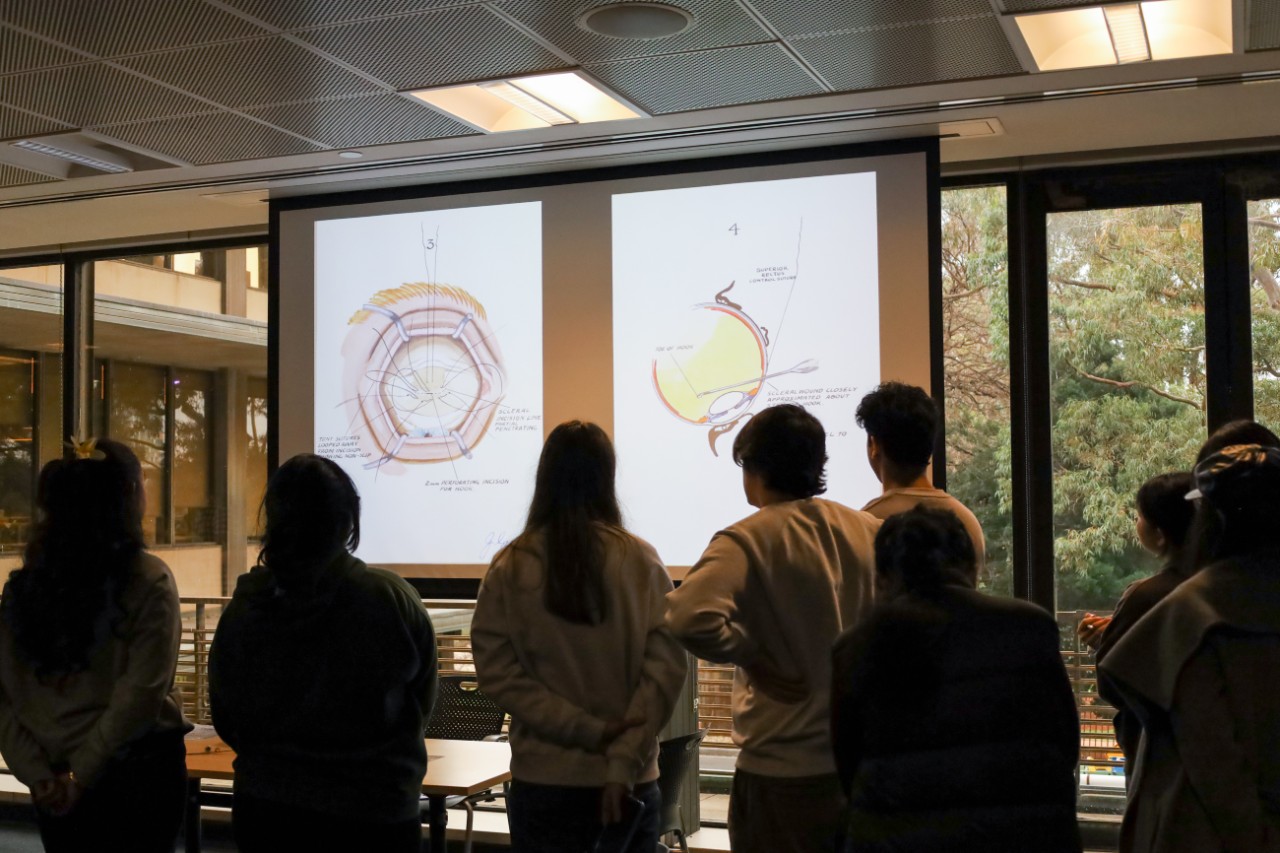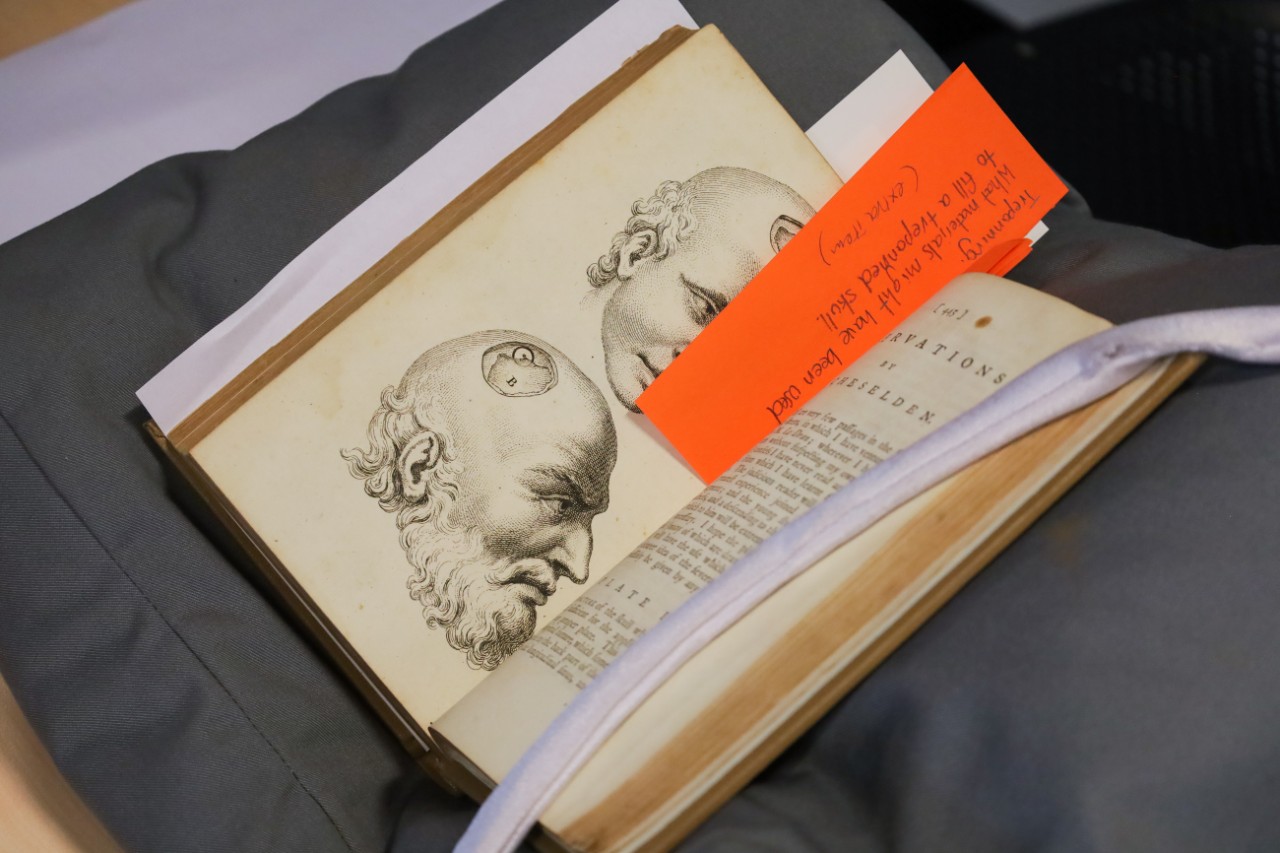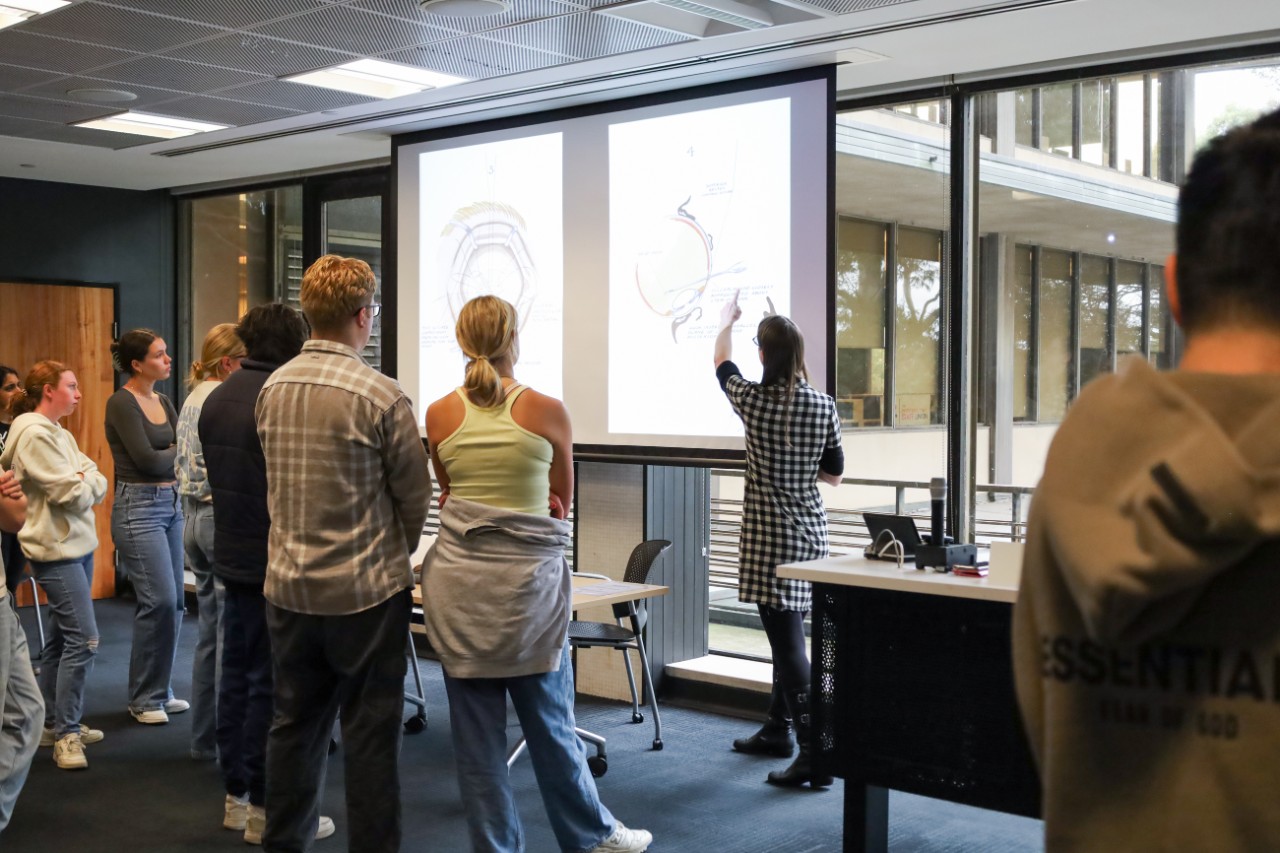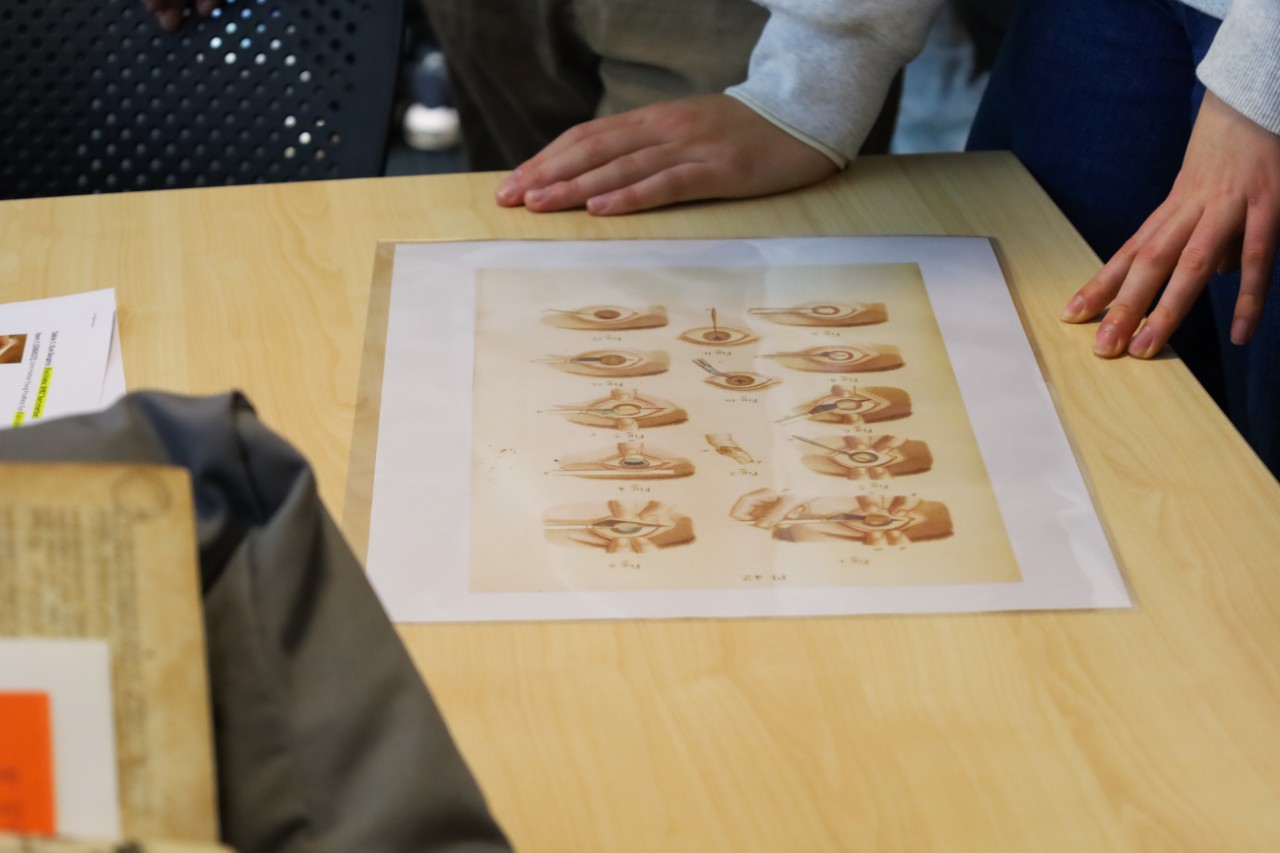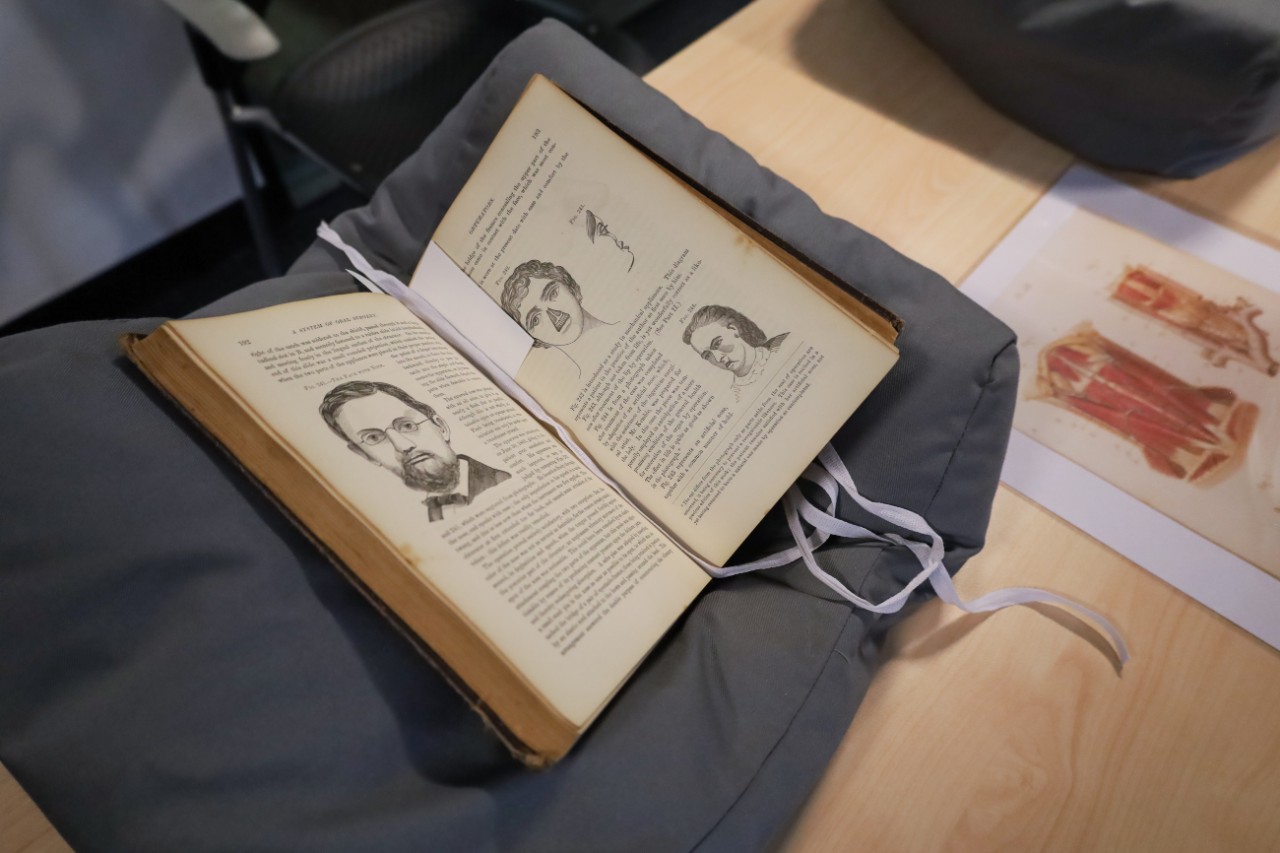Always was, always will be Aboriginal land.
The University of Sydney Library acknowledges that our buildings, collections, and practices exist on unceded Aboriginal lands. We recognise the diversity and knowledges of the Aboriginal and Torres Strait Islander staff and students across all the lands the University stands on, and respect the ongoing connection Aboriginal people have to these lands, their cultural practices, knowledge systems and histories. We pay our respects to their Elders, past and present, who have handed down custodianship to each generation for more than 60,000 years.
Money, J. (2021). Yilabara (Now). Filmed on Gadigal Country. Commissioned by the University of Sydney Library
Object Based Learning with third year Biomedical Engineering students
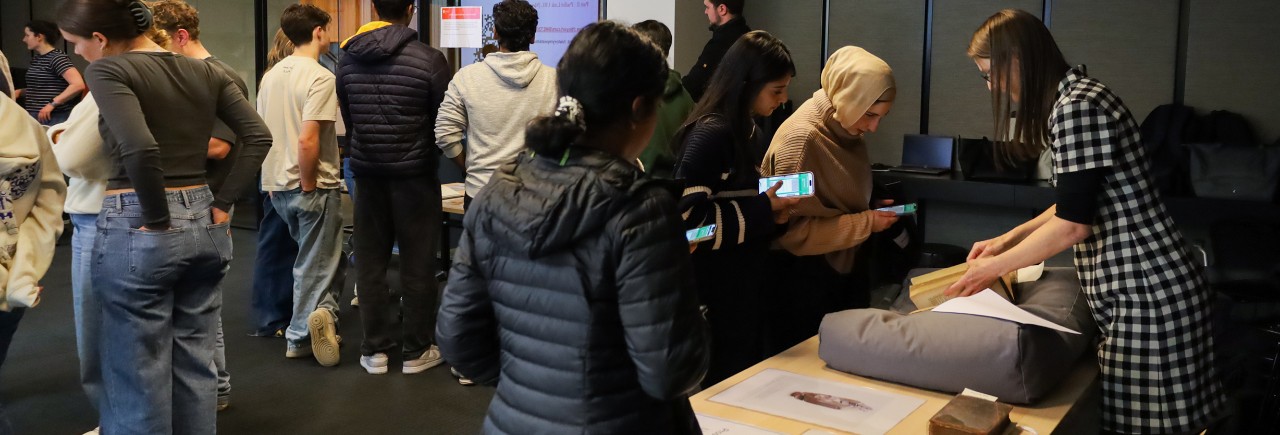

Groups of students huddled in groups during the Object Based Learning workshop
“Was really fascinating to look at previous approaches to biomedical problems and how they were implemented.”
In week 2 of this semester, Library and academic staff from the Faculty of Engineering collaborated to deliver our largest Object Based Learning (OBL) classes to date, with 138 students, delivered over 3 sessions. Students were able to get up close with Rare Books and Special Collections items depicting historical and present-day biomedical devices, with a special focus on prosthetics and implants.
The session commenced with a visual literacy activity to encourage students to look critically at the items. Students then worked collaboratively in groups to complete activities and answer questions based on 6 biomedical themes. Students engaged with objects dating back to the 1500s originating from Europe, South Asia, and the United States.
Content covered cadaver, fetal and animal bone graft procedures, bamboo and brass casts for broken bones, surgical devices, wound dressings and prosthetics for limbs, optometry, dentistry, otolaryngology and cardiology. Students were prompted to consider the practical and medical suitability of materials, their methods of manufacture and the strategies used to incorporate medical devices into human bodies.
Student survey feedback indicated that the novelty and physicality of the items encouraged their curiosity and interest in historical and future perspectives on biomedical devices. Guidance from staff facilitators provided invaluable insights, and the group activities and interaction with the items initiated enjoyable, insightful, and critical discussions.
Thank you to the team that made these sessions possible:
- Library: Leen Rieth, Emily Kang and Fiona Berry (Rare Books and Special Collections), Monica Cooper and Herschel Isaacs (Science and Engineering Cluster).
- Faculty of Engineering: Young No (Lecturer for BMET3961/9961 Biomaterials) and Sophia Franklin, Frank Fei, Sarah Fox, Matilda Longfield, Ghazal Shineh and Michael Wong (BMET3961/9961 Tutors).
The Library looks forward to facilitating more of these learning experiences in the future.
Related information
Related information
Contact
If you're interested in researching these items, or utilising them in a class or program, please get in touch with our Rare Books and Special Collections team via email.
Contact
If you're interested in researching these items, or utilising them in a class or program, please get in touch with our Rare Books and Special Collections team via email.
